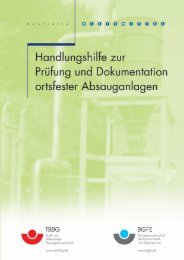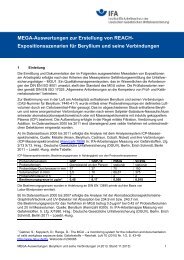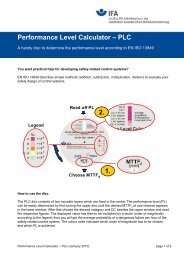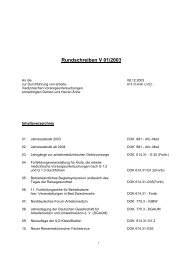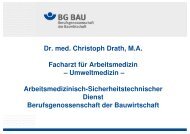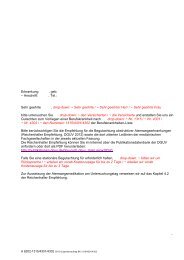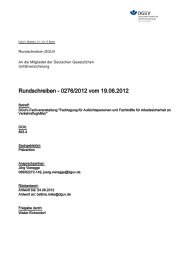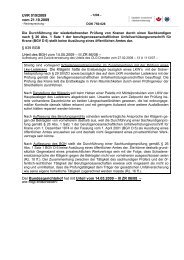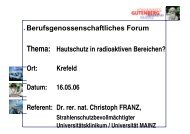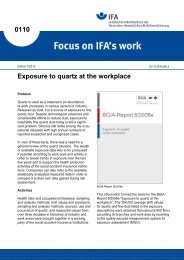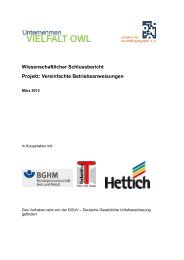Effectiveness of measures to prevent needlestick injuries among ...
Effectiveness of measures to prevent needlestick injuries among ...
Effectiveness of measures to prevent needlestick injuries among ...
You also want an ePaper? Increase the reach of your titles
YUMPU automatically turns print PDFs into web optimized ePapers that Google loves.
3 Descriptive epidemiology <strong>of</strong> NSI<br />
Two sources <strong>of</strong> NSI surveillance data were available for the US, also via the internet.<br />
EPINet data have been compiled and summarized approximately annually since 1992,<br />
and the National Surveillance System for Hospital Health Care Workers (NaSH) has<br />
been operated by CDC since approximately 2000. There are several differences be-<br />
tween the two surveillance systems. Hospitals participating in NaSH tend <strong>to</strong> be larger<br />
than EPINet user hospitals, averaging 592 vs. 315 beds. NaSH hospitals tend <strong>to</strong> clus-<br />
ter in northeastern US, while EPINet user hospitals are generally located in southeast<br />
and northwest regions <strong>of</strong> the country. Characteristics <strong>of</strong> patients treated by larger<br />
versus smaller hospitals, as well as regional cultural differences and differences in the<br />
workplace culture <strong>of</strong> larger compared <strong>to</strong> smaller hospitals could influence actual<br />
numbers <strong>of</strong> NSI, within-institution completeness <strong>of</strong> reporting and actual patterns <strong>of</strong><br />
NSI within occupational groups. In addition, NaSH and EPINet employed different<br />
methods for estimating the overall rate <strong>of</strong> NSI, and for estimating average rates <strong>of</strong><br />
underreporting (dependent upon occupational subgroup). For example, EPINet<br />
assumes an overall average <strong>of</strong> 39 % underreporting per year, while the NaSH<br />
assumes an average <strong>of</strong> 50 % underreporting [17]. Consequently, NaSH rates are<br />
higher than those from EPINet, and data from the two sources are reported separately.<br />
3.2 Results <strong>of</strong> literature review<br />
Results <strong>of</strong> several summary papers and selected studies are summarized by sub<strong>to</strong>pics<br />
<strong>of</strong> interest, including overall estimates <strong>of</strong> NSI risk <strong>to</strong> HCW, modifiers <strong>of</strong> risk, under-<br />
reporting, and risk <strong>of</strong> infection by pathogen.<br />
3.2.1 Risk <strong>of</strong> NSI<br />
According <strong>to</strong> a CDC study reported in several <strong>of</strong> the reviews [5; 6; 18; 19], approxi-<br />
mately 384,000 NSI are estimated <strong>to</strong> occur annually <strong>to</strong> hospital workers in the US,<br />
and more than 800,000 <strong>to</strong> all HCW combined (hospital and non-hospital settings).<br />
Based on pooled data from several institutions, Trim and Elliot calculated the NSI rate<br />
in the United States <strong>to</strong> be 1 % <strong>to</strong> 6 % per year (113 per 10,000 HCW <strong>to</strong> 623 per<br />
10,000 HCW), with a mean <strong>of</strong> 4 % [4]. Similarly, H<strong>of</strong>mann et al. estimated a national<br />
Report „Needlestick <strong>injuries</strong>“ 22



